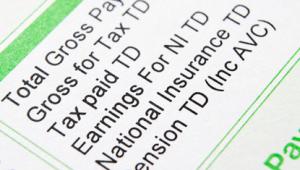By Heather Wakefield | 1 May 2013
Local government employees have been hit by a double whammy. Already underpaid and undervalued compared with other sectors, they are now bearing the brunt of public service cuts
The chancellor’s announcement of a further year of public sector pay restraint – pegged at 1% until 2015/16 with no additional increments – has pushed the question of public sector pay bargaining further up the agenda for public service unions like my own, Unison. It seems that, without a fight, there will be little scope for sector-wide pay negotiation at all until after the 2015/16 pay round. Even then, Labour also has its colours pegged to the 1% limit, so there’s no imminent solace to be found for the many low-paid public service workers struggling to make ends meet.
With Retail Prices Index inflation predicted to exceed 17% from now until 2017, the impact of the policy on most public sector workers will at one level be simple. It will be a significant real-terms pay cut, on top of another real-terms pay cut – an average pay loss of around £603 since 2010. In addition, pay and conditions for similar jobs vary significantly across bargaining groups so further earnings austerity will impact differently, creating more hardship for some groups than others.
Local government workers are being hit hardest. One noticeable difference in approaches to pay before and under the coalition is between local government and all other public sector groups. In 2010, the chancellor announced that public sector workers earning less than £21,000 would receive a one-off £250 payment for both years of the pay freeze. A shocking 60% – over 1 million – of local government workers fall into that pay bracket, yet Local Government Employers refused to make the payment. This means that council staff – excluding teachers – have had no pay increase at all since 2009, with a dispute hanging over a 1% offer with ‘strings’ for 2013/14.
Two questions then arise. Is local government subject to government pay policy or not? The answer to that seems to be ‘when it suits’. And why are local government workers treated less favourably than others in the public sector? Hovering above those two puzzles, a major longer-term question straddles all public services. How could – and should – public service jobs be valued and remunerated, both within the public sector and in relation to the private sector?
Amid what might still appear to governments and policy makers to be monolithic, inflexible pay systems, there is significant UK-wide, national and local variation in both pay and conditions within and across sectors. In addition, recent local bargaining led by employers has had a significant – and generally detrimental – impact on conditions of work. This applies particularly to local government, where the employers issued Reducing Workforce Costs in 2010, urging councils to worsen pay and conditions – by imposition if necessary. Local assaults on conditions are starting to appear in other sectors, too.
Let’s consider the cross-sector issues. First, there is the inequality in basic pay. A cleaner or catering worker in the police force earns £2,600 more a year than her local government counterpart. The annual pay gap between an NHS and council catering assistant is over £2,000. Control-room staff in the Fire Service earn almost twice as much as equivalent council administrators. Local government pay is considerably lower from top to bottom than earnings in all other parts of the public sector for equivalent jobs. And only in councils do the bottom six pay points fall short of the Living Wage of £7.45 an hour. When the National Minimum Wage was introduced in 1999, the lowest council pay rate was 25% higher. Today it stands in danger of being overtaken by the next NMW increase.
The recent transfer of responsibility for public health to councils has shown that this inequality within the public sector is equally true for ‘professionals’. A report for Unison by the New Policy Institute last year showed that only in local government were professionals such as lawyers, planners and accountants paid less than their private sector counterparts.
Then there are the conditions. Around half of councils have moved employees onto HM Revenue & Customs car allowances, leaving ‘high mileage’ users like social workers subsidising their employers. Unsocial hours payments have been hit hard too, along with redundancy pay and free car parking. All in all, being a council worker means you face a double whammy – hit hardest by the selective application of government pay policies and subject to the harsh approach to workforce issues that has characterised local government for at least the past 15 years. During that time, annual pay rises fell below inflation seven times, while some conditions, including annual leave and parental rights, now hover just above the statutory minima.
So what have council workers done to deserve bargain-basement treatment? There are some structural explanations. First, coalition cuts have clearly hit councils hardest, with some facing a loss of half their income. Secondly, local government finance is a combination of government grant and council tax income, while funding of pay elsewhere in the public sector comes direct from the Treasury. Raising some revenue from local people seems to attract harsh scrutiny and a strange penalty. Thirdly, a largely female workforce is ‘governed’ by predominantly male councillors and chief executives. During pay negotiations once, an ex-miner Labour councillor questioned why I was asking for more pay for women doing the same work as his wife did at home ‘for nowt’.
Then there is the issue of politics. Local government is by definition a more directly politicised employer. Conservative dominance for more than a decade has inevitably brought the influence of market-dominated thinking to bear on the workforce.
There is central government, too. Setting aside the evident insouciance of the current secretary of state, Eric Pickles, for his own subjects, the Department for Communities and Local Government and its predecessors have never seen the workforce and their rations as worthy of interest, let alone strategic direction or respect. The link between how employees are treated and how services are delivered has at least been recognised in the departments of Health and Education – although a stringent universal pay policy and moves to clamp down on union facilities may mean goodbye to all that.
Poverty pay and inequality in the public sector would suggest the need for a fresh approach to bargaining and its accompanying set of values. These should recognise the social and preventive value of much of the work undertaken by public sector workers and the importance of rewarding work of equal value with equal pay and conditions.
In 2009, the New Economics Foundation produced A bit rich? – a thorough analysis of the social return on investment in a range of jobs. This showed that a childcare worker or hospital cleaner generated £7–£9.50 for every £1 invested in her, compared with the £47 destroyed by a tax accountant for every £1 invested in him or the lost £7 for every £1 spent on a highly paid investment banker.
It’s time that all public sector workers enjoyed the products of effective bargaining with properly resourced trade unions, reflecting their invaluable contribution to our wellbeing.
This article was first published in the May issue of Public Finance magazine



















